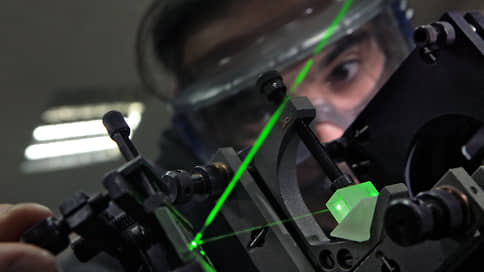The science of spending money – Newspaper Kommersant No. 157 (7358) of 08/29/2022
[ad_1]

In terms of budget allocations for civilian research and development, Russia ranked fifth in 2021 after the United States, Japan, Germany and South Korea, according to the Institute for Statistical Research and Economics of Knowledge (ISSEK) of the National Research University Higher School of Economics. Although the amount of money allocated for science is growing, their share in the total federal budget expenditures has increased slightly since 2010 – from 2.35% to 2.53%. Promising to annually allocate more than 1 trillion rubles. on the new state program of scientific and technological development, the government now expects civilian science to solve new problems: achieving technological sovereignty and creating its own critical technologies.
At the end of 2021, Russia dropped from fourth to fifth place in the ranking of countries in terms of budget allocations for civilian research and development, the ISSEK calculated. Taking into account the purchasing power parity of the national currency, the Russian budget last year spent $23.8 billion for these purposes. Russia is ahead of the United States ($87.6 billion), Japan ($83.4 billion), Germany ($51.2 billion) and South Korea ($24.5 billion).
In rubles in 2021, the budget allocations of the Russian Federation for civilian science in current prices amounted to 626.6 billion rubles. Expenses for applied and fundamental research were distributed in the ratio of 64.1% and 35.9%, respectively. Compared to 2020, the total amount of appropriations in constant prices decreased by 2.1%, for applied scientific research – by 0.5%, for fundamental – by 4.9%. At the same time, funding for research in the field of social policy increased by 49.8%, in the housing and chemical complex – by 15.6%. However, this can be explained by the low base effect – in 2020, these areas had a significant reduction in spending. The reverse situation is in healthcare. Pandemic-driven growth in research spending in 2020 (plus 52.2%) was followed by a 26.9% decline in 2021.
In general, in 2010–2021, the absolute value of spending on civilian science increased by 19.3% (in constant prices), but their share in total federal budget spending increased slightly, from 2.35% to 2.53%. The maximum share for this period was in 2013 (3.19%), the minimum – in 2017 (2.3%).
Recall that the main source of funding for research and development in the Russian Federation is the state: in 2020, according to the ISSEK, the share of its funds in science was 67.8%, while business – only 29.2%. “The main reserve for increasing the level of domestic spending on research and development in Russia remains mainly on the side of business,” Kommersant was told in the Accounts Chamber of the Russian Federation. They believe that for a scientific and technological breakthrough it is necessary to actively stimulate entrepreneurs to finance the entire range of scientific research and development.
Last year, the government approved a new state program for scientific and technological development, which for the first time combined budget funding for various areas related to civil science. Its annual funding, including support for higher education, will amount to 1.1 trillion rubles. In 2023, as Deputy Prime Minister Dmitry Chernyshenko reported in July, 492 billion rubles will be allocated for civilian science, 490 billion rubles in 2024, and 473 billion rubles in 2025. According to him, the research budget for the first time is focused on the tasks of the economy: achieving technological sovereignty and creating our own critical technologies. Among the priority areas, Kommersant was told in the office of the Deputy Prime Minister, are microelectronics, seed production, aircraft engineering, and small-tonnage chemistry.
It should be noted that all these amounts are allocated against the background of the absence of a comprehensive system for monitoring the effectiveness of research activities. The Accounts Chamber believes that the current metrics (scientometrics, patent statistics) can only partially fix it. They note the particular relevance of developing tools, including statistical ones, which would allow for a more objective assessment of the productivity of civilian science.
[ad_2]
Source link






